Bodies Bodies Bodies, Bones And All, Crimes of the Future, Daughter, Lola, Next Exit, Nope, Pennywise: The Story of IT, Soft & Quiet, Speak No Evil, Terrifier 2, The Innocents, The Northman, We’re All Going to the World’s Fair, X
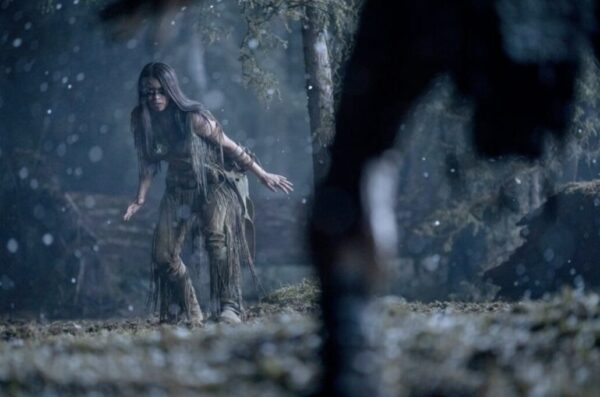
It’s that reflective time of year again. While 2020 and 2021 weren’t great for horror, 2022 has been phenomenal. In the list below, I mention 25 films (15 picks and 10 honourable mentions). And yet movies of the calibre of The Menu, Stalker, and You Are Not My Mother don’t get a nod – though one is mentioned in a different category. It’s interesting to note that most of them were films I’d hardly heard of until I saw them. Some genre icons came back with middling results: Scream, Texas Chainsaw Massacre, Hellraiser, and Halloween. Though thankfully, there were also stronger sequels to less fan favourite franchises. Predator, Orphan, and Terrifier. First, a note on inclusion. I’ve gone with films I saw at festivals or ones getting a general release this year – as such, you may not have had the chance to see them all yet. My list is also dedicated solely to films that can easily be classed as horror, have strong horror elements, or can be considered culty, e.g., fringe sci-fi. I have also picked one that celebrates films that meet this criterion. So as good as they are, don’t expect to see Boiling Point, Licorice Pizza, Everything Everywhere All At Once, or The Banshees Of Inishirin here. I’m not doing the worst of the year any longer, there are already enough negative outlets for films. However, if you’ve followed my reviews or our podcast, you’ll know some of the films I liked the least. Now, without further ado, let’s go to the ones I liked best.
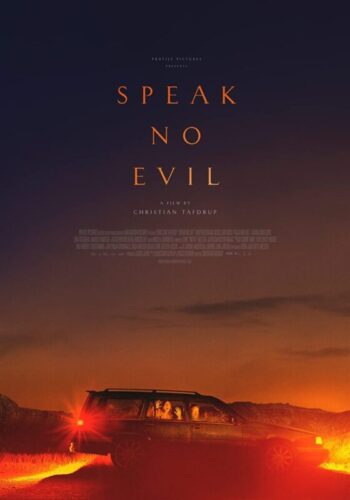
15. Speak No Evil. A Danish comedy about good manners and awkward etiquette that gradually morphs into one of the darkest, most macabre movies of the year. After some unfortunate events, Bjørn, Louise, and their son Abel befriend Patrick, Karin, and their daughter Agnes who invite them to visit them in the lovely land of Holland. The observational humour is spot on, but the most impressive part is how well director/co-writer Christian Tafdrup escalates the feeling of unease into outright terror. Fantastic performances by all four leads: the uptight Danish couple and the more liberated expressive Dutch one. They act as comedic and thematic foils but are also well-rounded characters in their own right. Half the audience will be yelling for Bjørn and Louise to get out of there at the first sign of trouble, but this is very much the film’s point. To them, an awkward silence is scarier than anything their hosts can do to them.
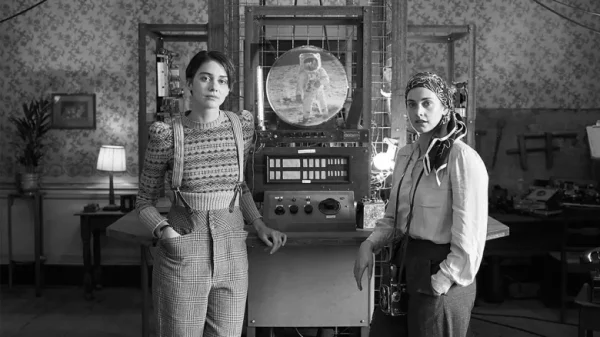
14. Lola. A delicate fusion of small-scale sci-fi and huge implications. Told across movie reels, shot on an old 35mm camera to give an authentic grainy look, Lola presents a fascinating alternative history of Britain. It all starts when two sisters in the 1940s start meddling with a machine that lets them intercept radio messages from the future. It begins innocently enough, with them boogying to Bowie, but soon they’re making world-changing decisions, and we see the consequences through some brilliant altered footage. As with other films of this type, this is a cautionary tale about playing God, and I loved some of the ethical decisions the characters need to make. Yet, at its core, there’s a brilliant piece about sisterhood, and the status of women at this time. The soundtrack, by The Divine Comedy’s Neil Hannon, needs a special mention: a creative mix-up of 40s instruments, jazz tunes, and 60s/70s fascist synth pop. An outstanding feature debut for Andrew Legge.
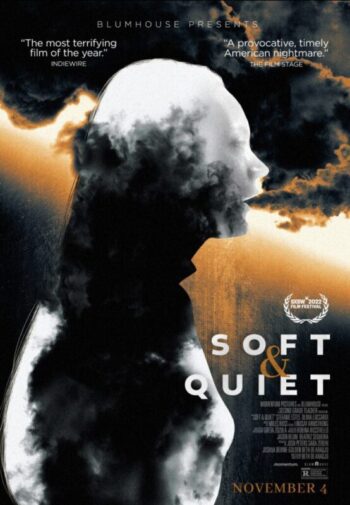
13. Soft & Quiet. A brilliant one-shot horror comedy about a group of racist women, aka Karens, who start their own white supremacist club. After a meeting in the local church ends abruptly, they go to buy some wine from a grocery, where they have a run-in with a local. From there, the tension builds and builds into one of the most stressful experiences of the year. As a commentary on the contemporary culture wars in the states, it’s a well-written piece that explores some of the misplaced socioeconomic grievances fuelling the characters’ prejudice without ever downplaying the extremity of their beliefs or the danger they pose to others. Writer/director Beth de Araújo never shies away from their casual cruelty and shocking self-righteousness as they terrorise those around them. There’s also laughter in the dark, with the characters totally out of their depth. It’s almost comical to see them scrappily trying to improvise their way out of an increasingly bad situation of their own making. Some performances are unconvincing, and the characters aren’t all clearly defined. Still, it’s an excellent premise, told well, that pushes audience identification to the limit – we are complicit from the start. And while we don’t sympathise with the perpetrators per se, being in on the whole thing puts viewers in a very uncomfortable position.
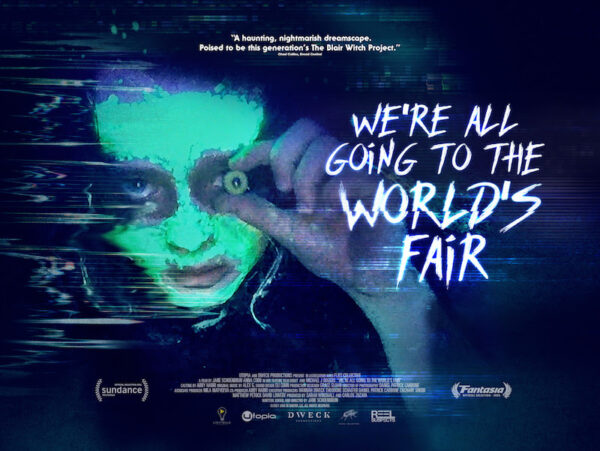
12. We’re All Going To The World’s Fair. A surreal found footage of sorts, told through computer screens and unlike any other you’ve seen before. Casey, an alienated teenager, becomes immersed in an online role-playing horror game which is thought to result in physical and psychological changes. But that can’t be real, right? It’s a movie that slowly gets under the skin, becoming increasingly unnerving. Yet the true source of horror isn’t the viral challenge as much as the growing relationship between Casey and an older man who claims to want to help her. Plaudits to Anna Cobb for a revelatory and fearless performance. The piece also doubles up as an exploration of bodily displacement and gender dysphoria. Writer/director Jane Schoenbrun has conjured up a unique coming-of-age tale that’s equally tender and terrifying – there is a dark beauty at its core. I suspect this will be far too slow and meandering for some, yet for those who connect with it, there’s something really rewarding here. Evocative, otherworldly, and sure to go down as a cult classic for sad internet kids everywhere. I look forward to seeing what they do next – all we have is the title: I Saw The TV Glow. I’m already intrigued.
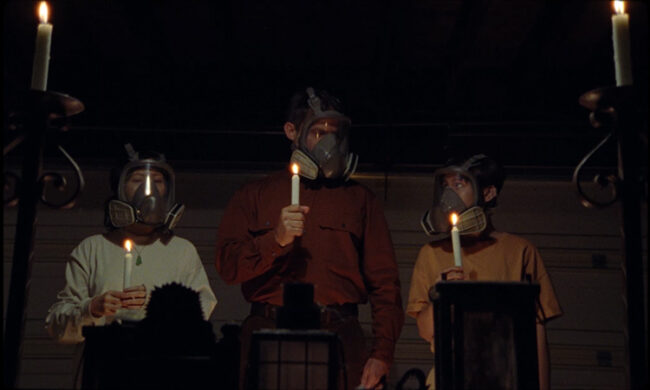
11. Daughter. Among the best films to have screened at this year’s FrightFest, the debut of writer/director/producer Corey Deshon is a disturbing chamber piece about family and faith. Like 10 Cloverfield Lane or Dogtooth, we are hardly ever outside the confines of their house, save for a 70s-style prologue. A young woman, played by Vivien Ngô, is abducted and forced to play the part of Daughter for a strange, strict household headed by the patriarchal Father. This role mainly consists of acting as an older sibling for Brother: a naïve and creepily happy child. There is a fascinating dynamic, with Father, a man prone to sermons and proselytising, appearing to have all the authority, though seeming only to use it to serve his needy son’s many needs. His mythologising about the world outside leads to welcome ambiguities. At face value, not a lot happens – it’s mostly just characters sitting around and talking with each other, followed by a bit of dancing. Yet the quiet character drama throughout, although often understated, provides a fascinating set of relationships that revolve around interesting concepts of power and truth. The sense of suffocation is enhanced with a 1.66:1 aspect ratio. As it goes on we get some thought-provoking revelations, as the stakes are upped. Still, it is often most effective when it is at its quietest. Deshon wisely leaves a lot about the situation to viewers’ imagination, gifting viewers with lots of little mysteries to mull over. Absurd, claustrophobic, and fascinating.
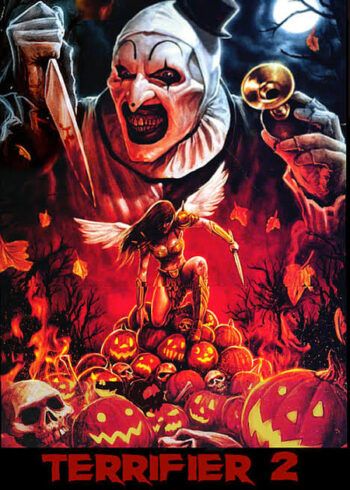
10. Terrifier 2. A sequel to a film that barely left an impression beyond a single scene (you’ll know it if you’ve seen it). Art the clown is back on another rampage, targeting a bereaved family. In particular, he focuses on teenage Sienna, her younger, serial killer obsessed brother Jonathan, and their friends. Every kill is an eyeball-popping, arm-breaking, penis-chopping, hair-tearing work of Art. The special effects department has set a new benchmark for onscreen violence and then some, mutilating victims and then rubbing salt on their many wounds. And yet the 150-minute running time allows us to get to know the characters too, giving us likeable leads and some surprisingly touching family drama. There’s also a deepening of the paper-thin lore from before. And while some decisions don’t seem to make much sense yet, it sows several seeds for further sequels. David Howard Thornton, as Art, also has lots of time to shine. Stand-out sequences include an extended riff in a costume shop and an unexpected but glorious song sequence that allow him to lean into his skills as a mime. The joy he takes in his brutality also tests audience complicity – admit it, you’re enjoying it. The addition of a surrogate daughter figure, The Demon Girl, is welcome too. Put simply, it’s a sequel that improves on its mediocre predecessor in every way.
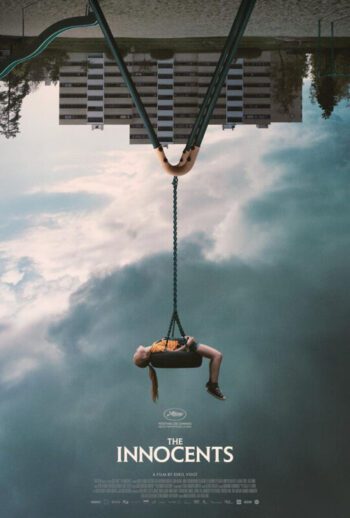
9. The Innocents. The second Scandinavian hit on this list – this time, a Norwegian offering. The Innocents is a much-needed antidote to numerous superhero films, as a group of troubled kids, all under 12 and living around the same apartment complex, develop powers. Think of it as a darker and far more intimate take on Chronicle. All four main parts, plus their parents, are fleshed out in this candid look at childhood violence and loss of innocence. Heck, even with the sort of baddy, the bullied boy Ben, we are asked to extend our empathy to him. In a way, you could take out the fantastical elements and still have a respectable drama about bullying, but what’s so impressive is how these real-world concerns are woven into the texture of a hero and villain origin story. Where cinema often depicts children as wholly pure, The Innocents asks nuanced questions about where and how they learn their morality. What would they do if they could move objects or hurt people with their minds? Excellent cinematography, frank violence, adept effects, and a chilling sense of dread make this one to watch regardless of if you are a parent. But cat owners, be warned: you will want to look away for one particularly harrowing scene.
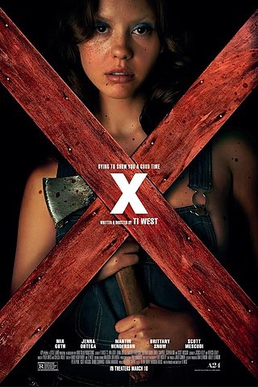
8. X. After years of doing what I’d call good but not great horror, Ti West has finally made something equal to the potential he has always shown. X is a grindhouse flick about a group of beautiful young people setting out to secretly shoot a porno in a ramshackle guesthouse belonging to some elderly Christian conservatives. We have the writer/director’s usual dirty aesthetic and enjoyable hangout scenes against a growing sense of unease. Yet what separates this from his other films is the more urgent pacing means, after the first act, we’re on edge for the remainder. Of course, it helps that this is his most relatable and endearing ensemble to date. While a horror film about making a porno could easily have traded in characterisation for a gleefully trashy mix of tits, swearing, and money shots, there’s an unexpected innocence. Yeah, we get all of those, but always in a way that seems earned. The film’s heart comes from a bunch of young people setting out to achieve their dreams and make a movie Guerrilla style. The sexually frustrated elderly couple, who take to them with a weird mix of lust and hate, also make for some memorable antagonists. X is a slasher that fully delivers and they do their killing in short, visceral bursts. Mia Goth also establishes herself as a horror icon. Frankly, I can’t wait to see the prequel Pearl.
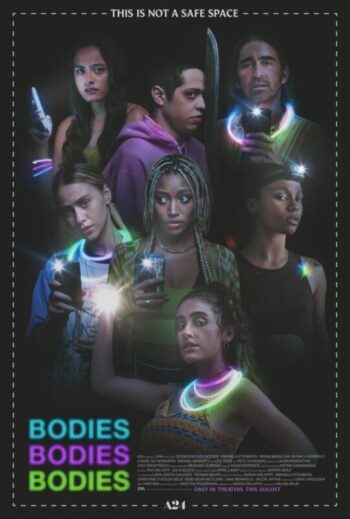
7. Bodies Bodies Bodies. And Then There Were None, with far more blood and way more f-bombs than your parents’ version. In this cool Gen-Z slasher, a group of annoying post-millennials get drunk, play a murder-in-the-dark style game, then get stalked and killed around a mansion on a stormy night. The cast is superb, really getting into their ridiculous roles with enough warmth and self-awareness that it rarely feels gratuitous. At times they are laugh-out-loud funny, and all have good material to work with. It functions partially as a satire of young people today, but at the same time, it seems more about building a film around youths than making a grand statement about them. However, perhaps the film’s most impressive achievement is bringing together such an unlikeable ensemble (a necessity when we know most won’t see the end credits). And then creating such edge-of-the-seat suspense about which of them, if any, will live. The solution is also superb, delivering a simple but elegant twist that, like the best whodunits, seems kick-yourself obvious after. One that I suspect will lend itself to repeat viewings revealing just how well Halina Reijn has constructed her perfect murder mystery. Lean, mean, and innovative.
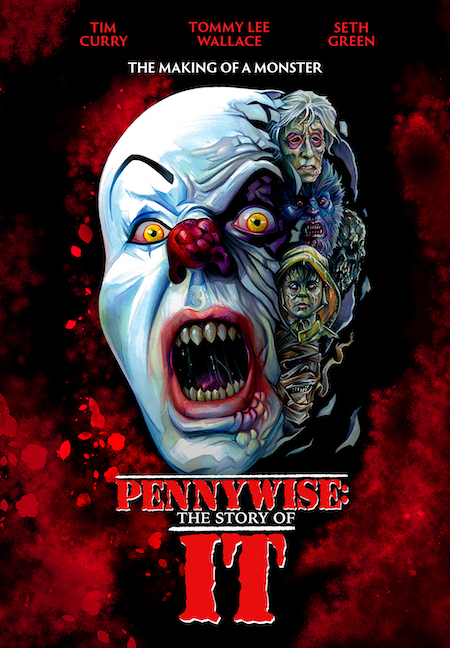
6. Pennywise: The Story of It. A heartfelt love letter to the 90s version of It, which reunites former cast members for an in-depth look at the show and its legacy. Although Bill Sarsgaard is maybe who we think of first as Pennywise, the Tim Curry incantation inspired a generation and acted as a gateway to horror for so many fans. This documentary is essential viewing for them and anyone else. It’s a lot of fun to remind ourselves of the good, the bad, and the ugly giant spider with the people who made it. The crew is remarkably open about the trials and tribulations behind the scenes, like the pressures of writing to a deadline and the specific demands of the format – they know that its legacy is somewhat mixed. As director Tommy Lee Wallace reflects “we had Champagne ideas and a beer budget.” It is also rewarding to see the cast members come back. Some have passed away, such as Bill Ritter and Jonathan Brandis, but of those who can contribute, it seems as if they have spoken to almost everyone involved. Even Tim Curry provides a talking head. Yeah, it’s largely fan service, and outside the It constant viewers, I can’t see it having much value outside a short conversation about fear of clowns. But then, would anyone who isn’t already part of the Losers Club realistically watch this?
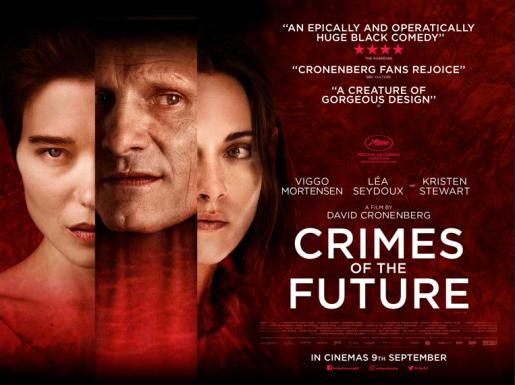
5. Crimes Of The Future. Cronenberg returns to his body horror roots in this nasty little sci-fi, originally written almost 20 years ago. In a hopefully distant future, humanity has evolved in strange ways. Some have upsides, for instance, the disappearance of physical pain and infectious disease, whereas others are less fortunate, with their bodies spontaneously creating new body bits. This means we have people like Saul Tenser, played by long-term collaborator Viggo Mortensen, who grows new organs he and his partner, Caprice, harvest for performance art. There are some unforgettable images here, a man covered in ears and a gratuitous lesson in anatomy that doubles up as a floor show. Chuck in police proecural elements and a subplot about a rebel movement dedicated to plastic consumption, and we have a film that, on paper, should be too odd to work. Still, what works is how well Cronenberg explores the emotional consequences of these changes if not their causes. There is much about finding meaning in illness/death, along with a meta-conversation the director seems to have with his younger self about the boundaries between art and physical mutilation. Yet where it is perhaps most interesting is in the questions it asks about personal autonomy and self-acceptance. Now, as we see debates around policing bodies, particularly those regarding access to abortion and gender-affirming surgeries, it has taken on a relevance it likely wouldn’t have at the turn of the Millennium. Special mention to the austere but compelling world-building, developing the film’s lore on the move.
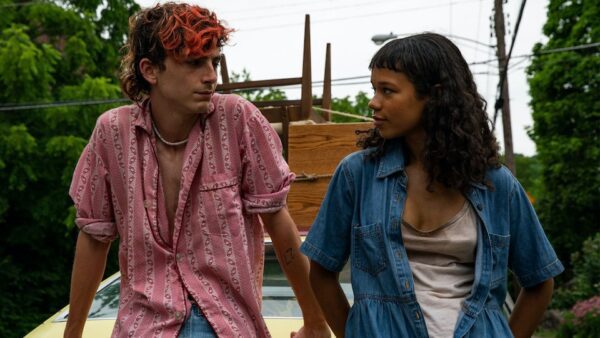
4. Bones And All. Maybe the misadvertised movie of the year, with a campaign that made it look like it’d be the next Twilight. Which is a shame, as I suspect many people who saw it didn’t like it, and a lot of people who would have won’t have gone near it. Maren is a young woman who learns she has a taste for human flesh. After revealing this at a party, chomping another girl’s finger, she leaves home and hits the road to find her mum, whom she has no memories of. En route she meets Lee, an intense and disenfranchised drifter who seems to have the same dark desires she does: they can smell their own. What follows is a gruesome, moving journey that looks at what it is to know oneself and somebody else in full, i.e., bones and all. It’s a story for outsiders everywhere about complete self-acceptance. Granted, some of the dramatic beats in the third act feel a little forced. Specifically, I’m thinking of a confrontation that seems more like a plot device than a natural escalation. Still, as a melancholic road trip, this makes for an accomplished slice of character-driven horror. Both Taylor Russell and Timothée Chalamet add layers to their parts – this is not a couple we necessarily root for, since both are murderers, but we don’t doubt the strength of feelings. They are initially closed-off people who find a connection in the wide open spaces of rural America. The cinematography is some of the best of the year, perfectly capturing the wildness. Director Luca Guadagnino once again shows himself as a master of creating and sustaining a mood. The soundtrack, by Trent Reznor and Atticus Ross, also helps by going effortlessly between cold acoustic and ethereal synth. It mimics the sweetness that offers our outsiders redemption, (partially) countering the undeniably bad things they do.
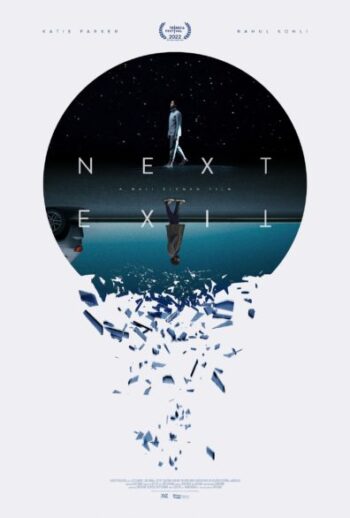
3. Next Exit. A speculative sci-fi in which a widespread acceptance of ghosts, and a scientist in San Francisco discovering she can track people after they die, has birthed a pain-free suicide technique. All she needs are some human lab rats to try it out. Enter Rose and Teddy, a pair of New Yorkers with very different personalities and reasons for wanting to end their lives. A bureaucratic mix-up sees them having to share a ride coast to coast. Rahul Kohli is fast becoming one of the most reliable actors in the UK. His performance here is no exception, with him conveying a mixture of cynical English cheeky chappy and kicked sheepdog. Katie Parker is also excellent, taking on probably the more demanding role of the two – since she is less immediately fun and more resistant to forming a connection with her carpool companion. However, she plays her part with compassion and nuance, making her someone hard to know but easy to love when you do. Their growing bond is the heart and soul of this transcendent travelogue. Both characters’ regrets get explored in a layered script that shows each actor their range. They get rewarding dialogues, monologues (look out for a bit about baseball), and powerful family moments. And while it overplays its odd couple dynamic at the beginning, finding gulfs where there are gaps, what forms between them is very organic. Their rapport gives the suicidal goal motivation dramatic weight. And though this is not strictly horror, Mali Elfman includes a few unnerving scenes that are given more power because of how much we care for those involved.
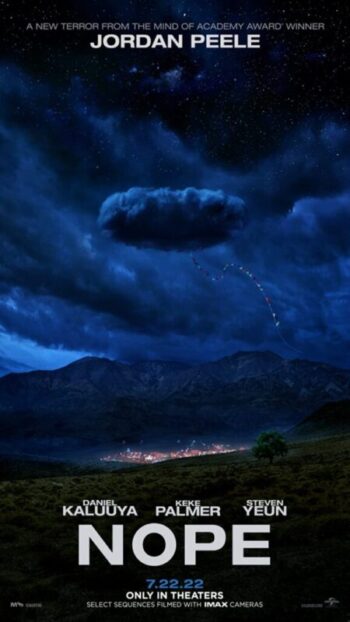
2. Nope. With Get Out and Us, Jordan Peele has given us two of the most memorable and complex horrors of recent years. However, for me, this is his crowning achievement to date. Telling the story of OJ and Em, two siblings trying to capture a UFO on camera, it’s Peele’s most ambitious film yet. On the one hand it’s a great hangout movie, with razor-sharp dialogue and a charismatic cast of characters. But it’s also a smart and thrilling alien movie that delivers and deconstructs the summer blockbuster. Against the backdrop of the old West, Nope cleverly dismantles the mythos of The American Dream and lays bare the exploitation that often underlies it. In this case, the natural resource is something out of this world. The Californian desert creates a beautiful backdrop where the vast spreads of darkness give the slightest blips a menace they wouldn’t usually have. Sure, we get the scenes the script humorously acknowledges audiences want. But for the most part, the alien threat exists as lights in the distance or small movements between clouds. It’s also a film about films: our leads are essentially a guerrilla production team with one goal: ‘the impossible shot.’ In other words, their literal money shot. Only, as we find out repeatedly, some things don’t want to be looked at, exposed, and made into a spectacle. Very tense, with a beautiful aesthetic and some spectacular set pieces, including the scariest money you’ll ever have seen. Nope is an excellent example of what can happen when an indie director has a brilliant idea and the budget to do it. Speaking of which, let’s move on to my winner…
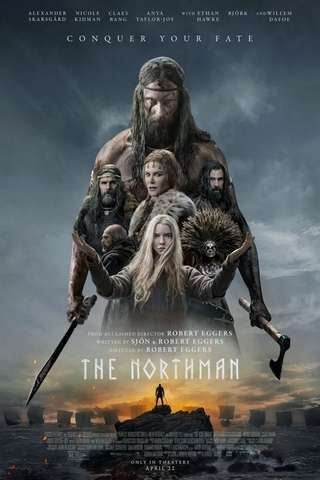
1. The Northman. Some will claim it’s not horror, seeing it more as a Viking drama. And that’s fair enough: it isn’t necessarily a neat fit. However, like the Korean revenge flicks of the early 00s, its power comes from being such a relentlessly grim story about personal corruption. Only where films like I Saw The Devil suggest that it takes a monster to beat a monster, The Northman goes a step further. Here, it isn’t about individuals but entire communities and social structures built upon ideals of status, glory, and divine rights: narratives that can easily turn a man to obsession. Amleth (whose saga inspired Hamlet) is no worse than anyone else in this cruel world: he’s a product of it. There’s strong, gory violence from the start as we watch our supposed hero sack a village. Then, after the terrible murder of his son, an act for which he swears revenge, it only gets worse. Alexander Sarsgaard throws everything he has at the role, raging and howling through every last scene. We never doubt how dangerous he can be or that he’d stop at nothing to get ‘what was taken’ from him, making his moments of unguarded tenderness all the more rewarding. It may be a big-budget film, but it has all of Robert Eggers’ usual strengths: period details, rich characters, a musical ear for dialogue, and a truly immersive atmosphere. In his earlier films, Eggers was perfectly able to inject moments of surrealism into a historically authentic account. This is much the same but on a bigger scale. It’s never clear how literally we’re meant to take the film’s divine intervention – the important bit is that Amleth is wholly convinced. With three excellent films out of three, for my money, he’s the most exciting voice in horror cinema right now.
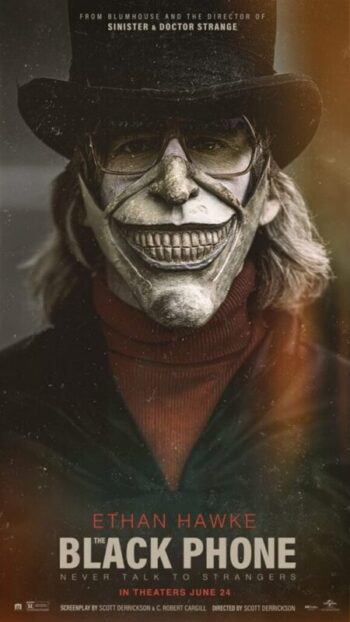
Honourable mentions (in no order):
The Sadness: Hyperviolent Taiwanese zombie film.
A Wounded Fawn: A stylish, gory, and tense slice of Giallo.
Fresh: Fun, gory cannibal comedy about the horrors of modern dating.
Prey: The most interesting, and tense, predator sequel by some distance.
Superhost: A great fun horror where a surprisingly realistic vlog goes wrong.
Sissy: A small-scale dark comedy horror with a fantastic central performance.
Barbarian: A twist-heavy thriller about masculinity gone wrong. Excellent casting.
Slapface: The horrors of bullying in this minimalist, supernatural coming of age flick.
Something In The Dirt: Benson and Moorehead do the most Benson and Moorehead film yet.
The Black Phone: A tense, punchy serial killer thriller. Excellent performances – especially the young cast.

Best performance:
Ralph Fiennes (The Menu)
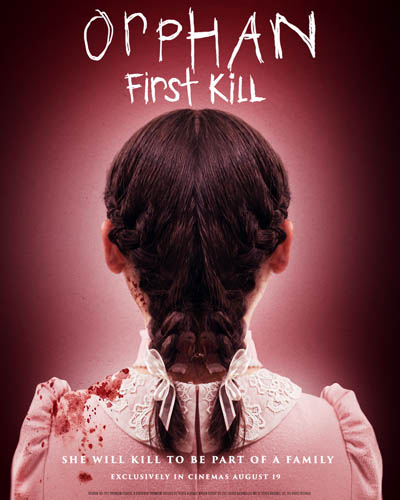
Surprise of the year:
Orphan: First Year
Films I wanted to see but didn’t:
Hatching
Watcher
Hellbender


Be the first to comment